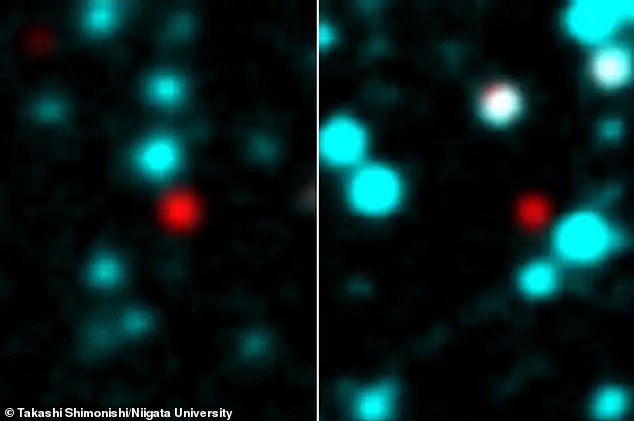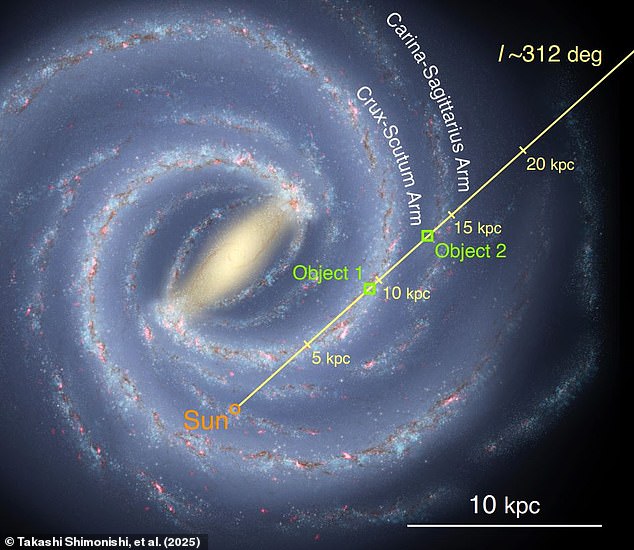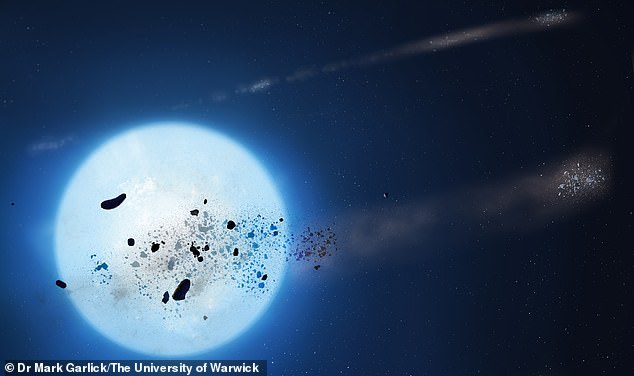A pair of unusual celestial bodies found in a distant region of the Milky Way galaxy have left scientists perplexed.
These unusual objects do not share any resemblance to anything astronomers have previously observed and may actually be a completely unknown type of star.
Researchers from Japan initially discovered the balls in 2021, but telescope observations have only recently verified the full extent of their unusual characteristics.
Based on current theories about star formation.
Although they closely resemble dense clouds of gas or newly forming stars, they are completely isolated from the regions where stars are typically created.
In like manner, even though they emit infrared light similar to a star, this does not correspond with the substantial quantities of ice that encircle them.
Actually, what adds to the peculiarity of this phenomenon is that the only two instances ever discovered are situated very closely in the sky.
He said, 'We made a strong attempt to reproduce the properties, but at this time, we cannot find any theories that can account for the spectral energy properties.'

Upon initially observing the two icy objects, Dr. Shimonishi immediately noted their unusual peculiarity.
between 2006 and 2011.
This showed that, even though the objects were near each other in the sky, they were still far enough apart to be distinct and unconnected.
Dr. Shimonishi and his colleagues estimated that Object 1 is approximately 9.3 kiloparsecs or around 30,332 light years from the Sun in a region of the Milky Way galaxy known as the Crux-Scutum Arm.
Object 2 is approximately 43,704 light years away from the sun, located within the confines of the Carina-Sagittarius Arm and measured to be at a distance of 13.4 kiloparsecs.
Although Dr Shimonishi's initial findings indicated that these objects were unusual, the space telescope lacked sufficient resolution to reveal further details.
They are going back to Chile to have another look with the intention of solving this mystery.
Not even the largest telescope in the world can reveal the unique appearance of these two icy worlds.

This new set of measurements has actually raised even more questions.
The ALMA observations show that the objects are positioned between the scales of one to ten times the extent of our solar system.
Compared to other gas clouds, it is relatively small in size.
Furthermore, the wavelengths of light being emitted from the object indicate that they consist of carbon monoxide and silicon dioxide.
The presence of a significant abundance of silicon in comparison to carbon is consistent with conditions found in a young star during its violent phase of new material release.
However, Dr Shimonishi claims that these objects' small size, considerable ice content, and highly isolated nature do not align with any other type of star currently recognized in scientific knowledge.
For this reason, the researchers propose that they might have come across a previously unidentified type of object.
The leading astronomer, Professor Jane Greaves at the University of Cardiff, who was not involved in this research, said: 'This study is truly captivating and also quite mysterious.'

'Two objects appear to possess conflicting features; they are sufficiently cold to have extensive ice, but also exhibit infrared radiation similar to that of a star.'
to gather additional information about these unusual phenomena.
These observations could help resolve the question of whether these icy bodies fit within our existing theories of star formation or not.
Dr. Shimonishi states: "The James Webb Space Telescope is extremely sensitive and possesses high spectral resolution, which enables us to perform a highly detailed analysis of ice or dust, thereby aiding in the understanding of the thermal history of the source."
Read more


0 Komentar